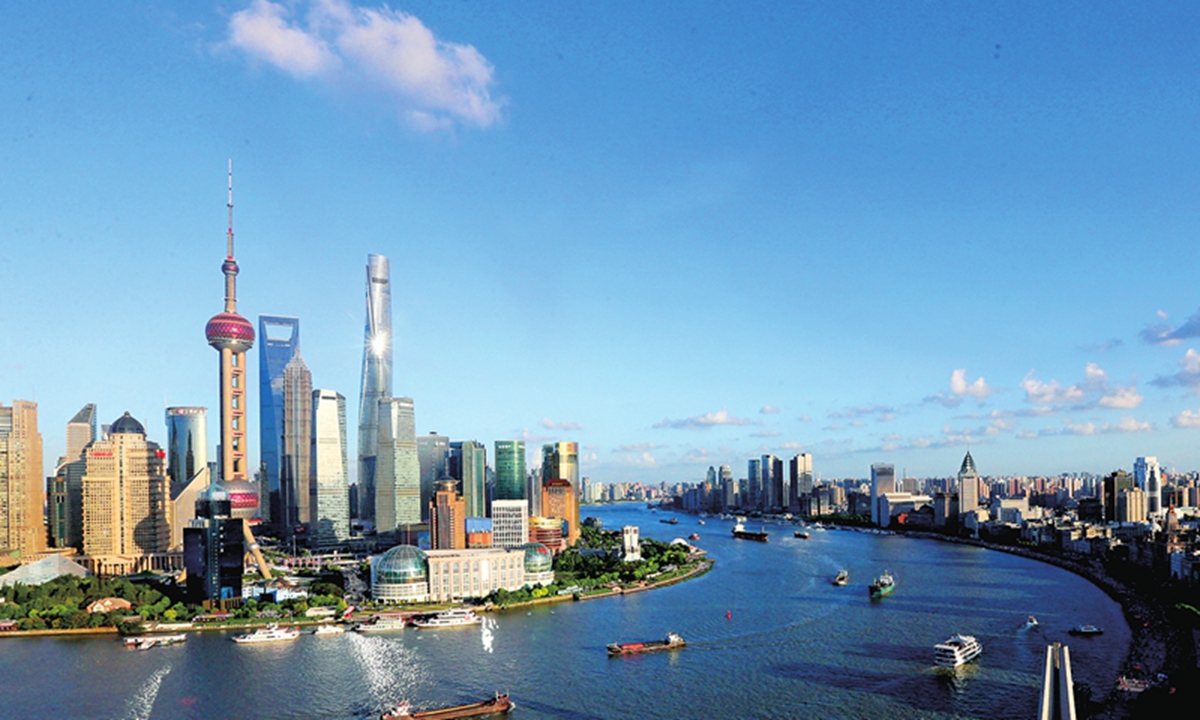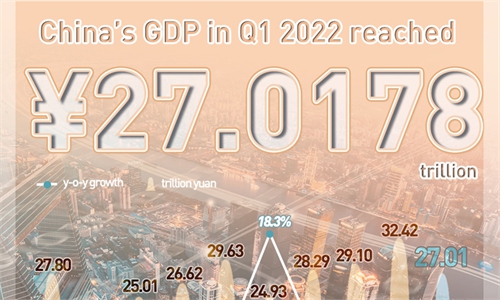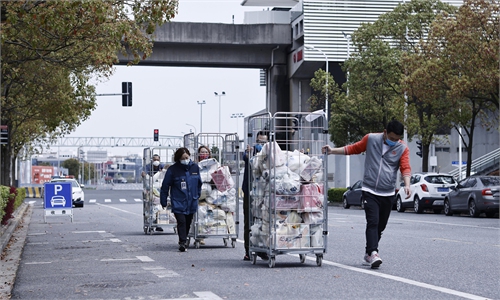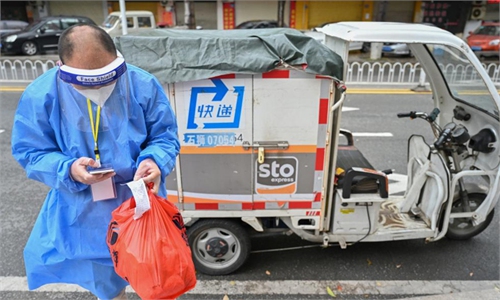
A view of the Lujiazui area in Shanghai Photo: Xinhua
China's economy grew 4.8 percent in the first three months of 2022, beating the expectations of most economists and market observers. However, if the government wants to realize the 5.5 percent GDP growth set at the beginning of the year, it needs to immediately gear up effort to drastically reduce the COVID19 infections in Shanghai, and reignite the engine of the country's largest industrial hub.Only after the virus' community transmissions and infections in Shanghai are curtailed and extinguished, can large-scale manufacturing restart - generating much-needed parts and components for thousands of assembly lines in Shanghai's neighboring provinces and cities.
And at the same time, the Chinese government should not hesitate to stick to its proactive monetary and fiscal policy by channeling more public funds and private investment into important areas of the economy, such as infrastructure, high-tech innovation and social welfare projects.
If needed, the People's Bank of China, the central bank, should continue to reduce the commercial lenders' reserve requirements so that the financial system has sufficient liquidity to facilitate faster economic growth in 2022.
Also, the central bank may move to cut the benchmark interest rates by 25 basis points in coming weeks to reduce borrowing costs for tens of thousands of Chinese enterprises.
The country's economy rebounded quickly from the pandemic in 2020, but activity weakened last year as tighter credit controls on borrowing by real estate developers hit housing construction, a sector which supports millions of jobs. This was followed by the debt problem of China Evergrande Group, one of the country's top property developers, which made consumers very nervous about spending and investors anxious about potential defaults in the property sector.
In the past, investment directed toward infrastructure projects by China's central and provincial governments has been proved, time and again, to be the most effective way to jumpstart a sputtering economy, just like China's extraordinary 4-trillion-yuan investment in 2009 on bridges, expressways, high-speed railways, sea ports and airports, urban subways and rural reservoirs, after the US subprime default woes induced the global-level financial crisis in 2008.
Facing a ferocious resurgence of COVID19 at home and another drastic geopolitical quake (Russia-Ukraine military conflict) internationally, it is imperative for China to ratchet up the scale of capital investment in 2022 to avert a severe slowdown or an economic hard landing. Since the country has more than $3.2 trillion in foreign currency reserves, it is appropriate to earmark approximately 2-trillion-yuan this time toward constructing new infrastructure and funding new and high-tech industrial projects.
And, gearing up domestic consumption is another important lever to back up China's economic growth. In March, quite unexpectedly, retail sales fell by 3.5 percent from a year earlier, as strict COVID19 restrictive measures taken in a variety of Chinese cities, including Shenzhen, Changchun, Taiyuan, Suzhou and Shanghai, seriously pummeled consumption of goods and services.
The State Council, China's cabinet, has already enacted decrees to inspire urban and rural consumption of big-item commodities such as clean energies, electricity-fired vans and cars, panel television sets, refrigerators and washing machines. To speed up sales of auto vehicles, the government could consider cutting their consumption taxes, which is now as high as 15 percent.
And, it is important for the government to continue channeling funds to augment social welfare to support the general public, including medical care, unemployment insurance and pensions. Once confident over their future after retirement, Chinese consumers will be more likely to open up their wallets.
By all metrics, Shanghai is one of the leading engines of Chinese economy, because it is home to the most high-tech manufacturers in the country, including plants of semiconductor chips, auto-making, tools and machinery, electronics, chemicals, batteries and biomedicine.
If factories in Shanghai remain shut-down for too long, it may cause disruptions to the entire industrial chain and supply chain, with negative economic implications far and wide. Therefore, it is critical to strengthen anti-coronavirus measures and do all in the country's capacity to choke off the virus' transmissions and infections in the city.
To sum up, China should focus on implementing more flexible monetary and fiscal policy in 2022 and 2023, so that the system has enough liquidity to buttress around 5.5 percent economic growth. And, it is important to prevent another large-scale coronavirus outbreak in any of China's first-tier cities, so that the economy's growth momentum won't be disrupted or weakened. And, now it is time to act.
The author is an editor with the Global Times. bizopinion@globaltimes.com.cn



